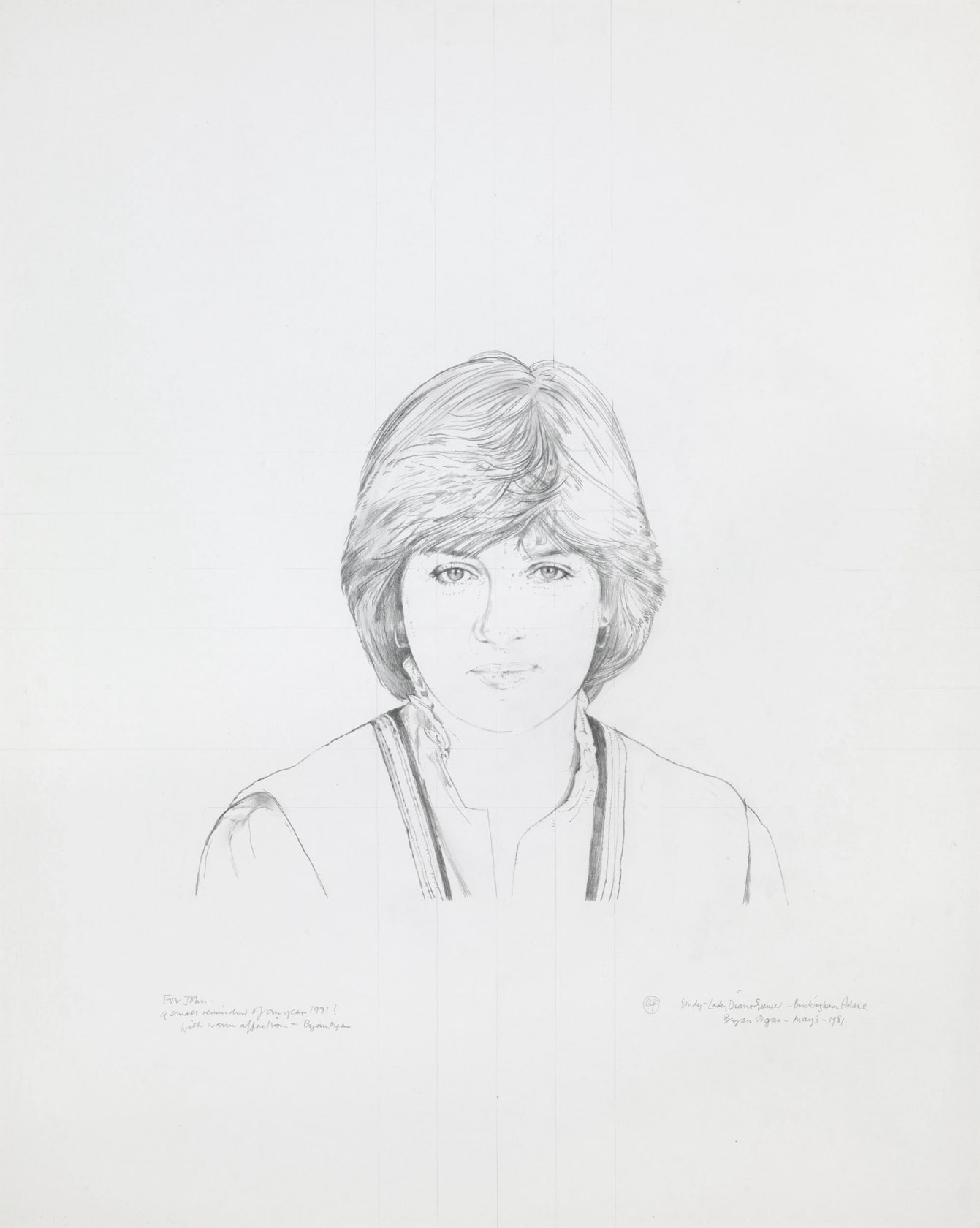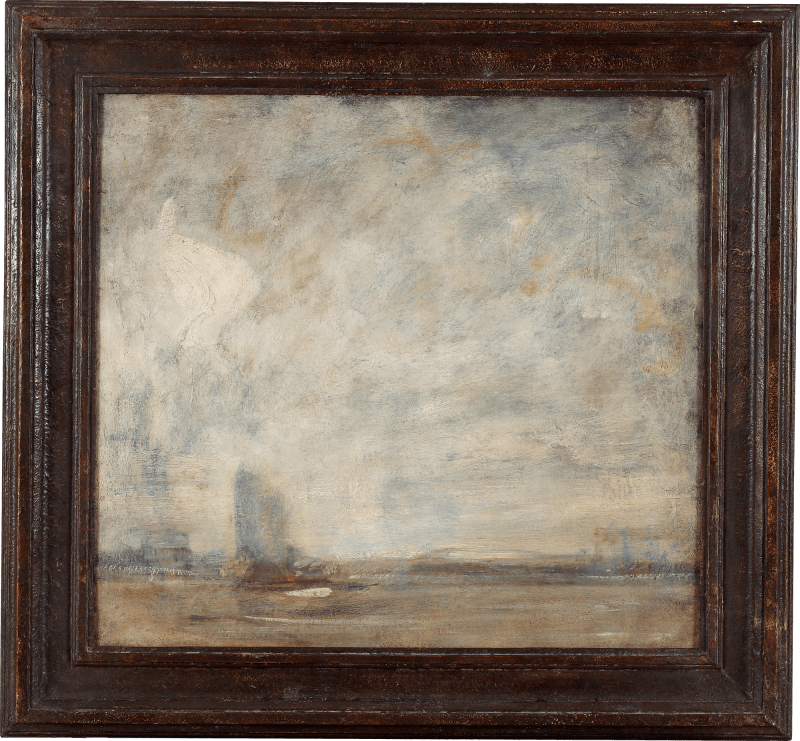Drawn from life at Buckingham Palace, this meticulously finished preparatory drawing is typical of Bryan Organ’s precise draughtsmanship. It is the most finished of four drawing studies for his 1981 acrylic portrait of the Princess as Lady Diana Spencer, during her engagement to the Prince of Wales.
The completed portrait depicts Lady Diana Spencer in the Yellow Drawing Room of Buckingham Palace and is characteristic of the ease and informality that Organ can convey in a work that, nonetheless, remains a formal portrait. His psychological insight is also telling since this portrait reveals the particular strengths of the future Princess’s character, which were at the time unexplored, whilst contemporary photographs emphasise youth and naivety.
The previous year, Organ was commissioned to paint the Prince of Wales and in 1983 he painted the Duke of Edinburgh, both of which are in the National Portrait Gallery. His talent for discovering the humanity in his subjects without eroding their dignity has made...
Drawn from life at Buckingham Palace, this meticulously finished preparatory drawing is typical of Bryan Organ’s precise draughtsmanship. It is the most finished of four drawing studies for his 1981 acrylic portrait of the Princess as Lady Diana Spencer, during her engagement to the Prince of Wales.
The completed portrait depicts Lady Diana Spencer in the Yellow Drawing Room of Buckingham Palace and is characteristic of the ease and informality that Organ can convey in a work that, nonetheless, remains a formal portrait. His psychological insight is also telling since this portrait reveals the particular strengths of the future Princess’s character, which were at the time unexplored, whilst contemporary photographs emphasise youth and naivety.
The previous year, Organ was commissioned to paint the Prince of Wales and in 1983 he painted the Duke of Edinburgh, both of which are in the National Portrait Gallery. His talent for discovering the humanity in his subjects without eroding their dignity has made him a popular artist, not only with members of the Royal Family but also with politicians and the judiciary. The Earl of Stockton sat to him for a memorable portrait, as did Lords Callaghan and Denning, whilst Organ’s portrait of François Mitterrand made him the first non-Frenchman to be commissioned to paint a French President.
The 1981 commission cannot escape a certain poignancy, as it depicts Lady Diana Spencer at the inception of her career as Princess of Wales. This sketch was exhibited by Philip Mould Gallery (then Historical Portraits) in 2001, as an intrinsic part of the Power and Beauty exhibition. Compared to other portraits in this exhibition, Organ’s Diana certainly depicts a woman on the cusp of even greater power, influence, and beauty, but is immeasurably different in that her life was played out before a global audience who, for sixteen years, never lost a ravenous appetite for pictures and information of her. The possibilities and pitfalls of such exposure were a dominant feature of her life and as a result, whatever controversy she may have excited, her image is unquestionably one of the great icons of the twentieth century.











